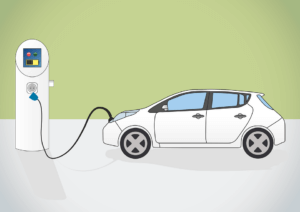 Electric vehicle (EV) batteries are at the heart of the revolution in sustainable transportation. Understanding how these batteries work is essential for anyone interested in the future of automotive technology. You can also learn about the shift toward cleaner energy sources.
Electric vehicle (EV) batteries are at the heart of the revolution in sustainable transportation. Understanding how these batteries work is essential for anyone interested in the future of automotive technology. You can also learn about the shift toward cleaner energy sources.
Electric Vehicle Batteries
At the core of an electric vehicle’s propulsion system is its battery pack. These packs are typically made up of thousands of individual lithium-ion battery cells. Each cell contains three key components: a cathode (positive electrode). They also have an anode (negative electrode), and an electrolyte. When the EV is in use, the battery management system (BMS) regulates the flow of electricity between these components.
Vehicle Charging
The process of storing and delivering electrical energy begins when the vehicle is charging. During this phase, electricity flows into the battery, causing lithium ions in the cathode to move through the electrolyte, It then goes into the anode. The anode is usually made of a carbon-based material. As more lithium ions move from the cathode to the anode, the battery charges and stores electrical energy.
When the EV is in motion, the opposite process occurs. The BMS controls the release of electricity from the battery. Lithium ions move from the anode back to the cathode through the electrolyte. Thus, creating an electrical current that powers the vehicle’s electric motor. This process is what propels the car forward. As the battery discharges, its stored energy is converted into kinetic energy, moving the wheels and driving the vehicle.
Optimize the Performance
To optimize performance and protect the battery from overcharging or discharging, advanced battery management systems are employed in modern electric vehicles. These systems monitor the state of charge (SoC) and state of health (SoH) of each individual battery cell, ensuring that they operate within safe parameters. If any issues are detected, such as excessive temperature or voltage fluctuations, the BMS can adjust the battery’s operation or, in some cases, isolate problematic cells to prevent further damage.
In summary, EV batteries work on the principle of lithium-ion chemistry. They store electrical energy during the charging process by moving lithium ions from the cathode to the anode and release this energy as an electrical current to power the vehicle’s motor when in use. The battery management system plays a critical role in monitoring and controlling the battery’s operation to ensure safety, efficiency, and longevity. As technology continues to advance, we can expect EV batteries to become even more efficient, with longer ranges and faster charging times, further accelerating the transition to electric vehicles and reducing our reliance on fossil fuels.